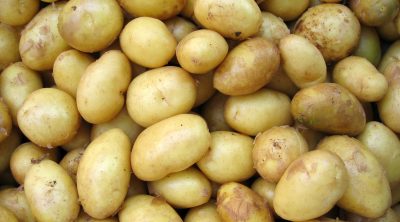Whether you’re cooking a quick breakfast before work or an intensive dinner for you and your loved ones, cleaning up after cooking is just as important as making the food itself.
Keeping your cooking utensils in clean and working condition can making cooking a breeze no matter when you decide to cook next. When it comes to baking specifically, a flour sifter can come in handy, and it’s important to make sure to clean your flour sifter like you would any other kitchen utensil. But what if you don’t know how exactly to clean it?
Contents
How to Clean a Flour Sifter
There are multiple methods when it comes to cleaning a flour sifter, depending on both the state of your flour sifter and how clean you’d prefer your flour sifter to be.
Cleaning your flour sifter could be as simple as dumping out the excess flour from the sifter over the trash bin, but it can also be as intricate as washing it in the dishwasher or using warm soap and water. The choice is yours.
In the case of washing your flour sifter, a simple remedy of soap and water will work just fine. Where the tricky part comes into play is what happens after you’re done washing it. You need to make sure that your flour sifter is completely dry before storing it away. Many recommend using a hair dryer or a dishtowel to make sure that the sifter is dry.
This is to ensure that the flour sifter does not rust, which can cause more problems if not dealt with as soon as possible.
Be completely certain that the flour sifter is dry after washing to ensure there will be no further issue after cleaning, and you’re good to go.
Why do I need to clean my flour sifter?
In most cases, simply banging out the excess flour clumps from the sifter over the trashcan will simply do, but up-keeping the cleanliness of your flour sifter is important to not cause issues in the future. For instance, if flour or debris were to become lodged inside of the sifter, due to the two layers of wire mesh, it could be very difficult to dispose of it.
The flour could accumulate and cause clumps which can make the sifter unusable or hard to use. This is why keeping the flour sifter free of dust or debris is important to make sure that using your flour sifter is simple and straightforward.
Why Is It So Important to Dry the Flour Sifter?
Drying your flour sifter is imperative to make sure that flour clumps or other debris doesn’t get stuck inside of the sifter. When the sifter is wet, flour cannot be sifted and will alternatively become clumped inside the sifter.
This will make the sifter unusable until the flour clumps are removed which isn’t an easy task. Another reason why it’s important to dry your flour sifter is that a wet flour sifter can rust and this same rust can end up in your flour and in your food. This issue does not happen with plastic flour sifters however.
How do you remove rust from a flour sifter?
Removing rust from a flour sifter is not necessarily recommended due to the fact that not removing the rust correctly could result in the contamination of your food and could cause further issues down the line.
However, if you’d still like to remove the rust off of your flour sifter, it is recommended to use hot water, vinegar, or by vacuum cleaning. All have been considered great methods for removing rust from your sifter.
How do I get flour clumps out of the sifter?
In the case that you’ve gotten flour clumps stuck inside your sifter, have no fear. Removing flour clumps from your sifter can be difficult, but it’s not impossible.
The best way to remove the clumps is by using either a toothpick or toothbrush in order to break the clumps loose. If the clumps are removed by this point, it’s best to wash the sifter after and dry completely before next use.
Another method to remove flour clumps is by using an air compressor in order to blow the clumps of flour out of the sifter. Using this method also ensures that you won’t have to clean your flour sifter after, meaning the chance of flour clumps getting in your sifter again are very low.
Is it possible to sift flour without a sifter?
There are a multiple of ways to sift flour without a sifter. One of the most popular ways to do this is by using a strainer. Since a strainer sports the same metal mesh that a sifter would have, it could potentially be used to sift flour as well.
A more traditional approach to flour sifting would be to simply use a whisk and a fork to break the flour down. While this method is more time inducing, it holds very similar results to what a flour sifter can do.
How do I store my flour sifter?
When it’s all said and done, ensuring that your flour sifter is in a safe place after use is just as important as cleaning it. Keeping your flour sifter in a dry and cool area is recommended, as well as putting a plastic bag over it. This is to ensure that no dust or debris gets caught in the flour sifter while it is not in use.







Leave a Reply